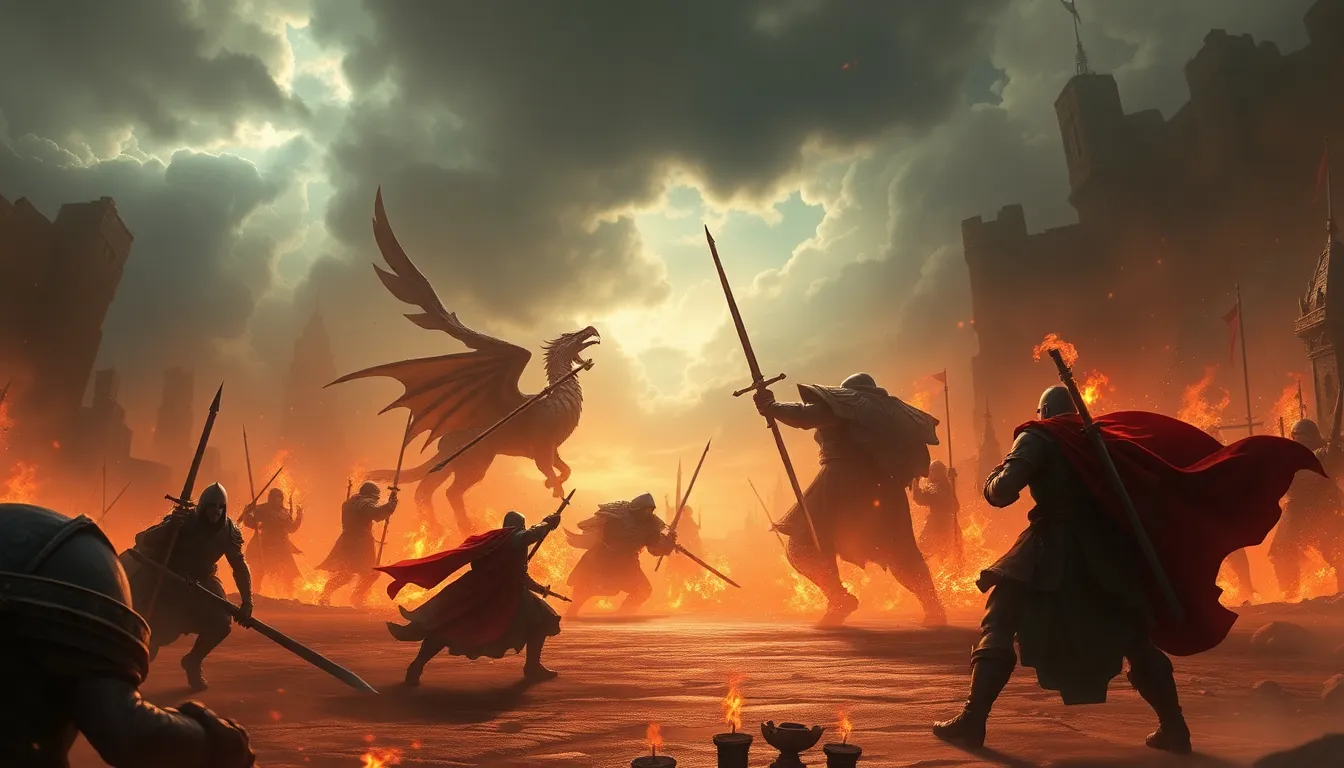The Quest for the Star-Crossed Lovers: Romantic Myths
Introduction: The Allure of Star-Crossed Love
Star-crossed lovers are individuals whose romantic relationship is thwarted by external forces, often leading to tragedy and heartache. This term, popularized by Shakespeare’s “Romeo and Juliet,” encapsulates the essence of doomed love, where fate seems to conspire against the lovers. The cultural significance of romantic myths surrounding star-crossed lovers extends beyond mere storytelling; they reflect deep societal values, ideals, and emotions related to love, sacrifice, and destiny.
Historical Roots of Romantic Myths
Throughout history, numerous cultures have produced poignant tales of love that defy societal norms and face insurmountable obstacles. Ancient civilizations, from the Greeks to the Egyptians, crafted narratives that explored the complexities of love.
- Greek Mythology: Stories like those of Orpheus and Eurydice illustrate the depths of love and the pain of separation.
- Roman Tales: The story of Pyramus and Thisbe is a classic example of tragic love that predates Shakespeare.
- Eastern Myths: In Indian mythology, the tale of Heer Ranjha showcases the struggles of lovers against societal constraints.
Mythology has played a significant role in shaping societal views on love, serving as a lens through which cultures understand and express the trials of romantic relationships.
Iconic Star-Crossed Couples in Literature
Literature is replete with iconic couples whose stories encapsulate the themes of fate and tragedy. Two of the most recognized pairs are:
- Romeo and Juliet: Their love is beautiful yet ultimately doomed, a reflection of societal pressures and family feuds.
- Lancelot and Guinevere: This love affair is marked by betrayal and the conflict between loyalty and desire.
Both stories delve into themes of fate, destiny, and tragedy, illustrating how powerful emotions can lead to devastating consequences.
The Influence of Folklore and Fairy Tales
Folklore and fairy tales often feature themes of doomed love, reinforcing the notion of star-crossed lovers. The tale of Orpheus and Eurydice serves as a poignant reminder of love’s power and its potential for tragedy. In this story, Orpheus’s journey to the underworld to retrieve his beloved represents the lengths one might go for love, yet it also highlights the fragility of happiness.
Fairy tales have evolved significantly over time, often reflecting societal changes in attitudes towards love and relationships. The transformation of stories like “Cinderella” demonstrates how romantic ideals have shifted, yet the core theme of love overcoming obstacles remains prevalent.
Modern Interpretations of Star-Crossed Love
Contemporary literature and film continue to reinterpret the myths of star-crossed lovers, often infusing modern themes and complexities. Some notable examples include:
- The Fault in Our Stars: This novel and subsequent film explore the love between two teenagers battling cancer, highlighting the bittersweet nature of love and loss.
- La La Land: This musical tells the story of two aspiring artists whose love faces the harsh realities of ambition and dreams.
These modern narratives often reflect the struggles of contemporary relationships, emphasizing how the essence of star-crossed love remains relevant in today’s society.
Cultural Variations of Star-Crossed Lovers
Romantic myths manifest differently across cultures, each offering unique insights into the nature of love. A comparison of various traditions reveals fascinating elements:
- Indian Mythology: The tale of Radha and Krishna illustrates divine love that transcends earthly struggles.
- Chinese Legends: The story of Liang Shanbo and Zhu Yingtai, also known as the Butterfly Lovers, emphasizes the conflict between love and familial duty.
- Western Narratives: Classic tales like those of Tristan and Isolde highlight love’s often tragic nature against societal expectations.
These cultural variations enrich the understanding of romantic myths and their significance in different contexts.
Psychological Aspects of Star-Crossed Love
The allure of star-crossed love often stems from psychological factors. Many people are drawn to the idea of doomed romance due to:
- A sense of adventure and passion associated with forbidden love.
- The emotional intensity that comes from overcoming obstacles.
- The notion that true love must endure hardship to be validated.
These myths can significantly impact real-life relationships by shaping expectations and ideals about love, often leading to unrealistic standards.
The Role of Fate and Free Will in Romantic Myths
The tension between fate and free will is a central theme in many romantic myths. Characters often grapple with the consequences of their choices, suggesting that while destiny plays a role, individual actions are equally significant. This philosophical dilemma raises questions about:
- How much control individuals have over their romantic destinies.
- The extent to which fate influences relationships.
Such narratives provoke thought about the nature of love and the balance between predetermined paths and personal agency.
Lessons Learned from Star-Crossed Lovers
The stories of star-crossed lovers impart valuable lessons about love, sacrifice, and the complexities of human relationships. Key insights include:
- The importance of open communication and understanding in relationships.
- Recognizing that love often involves sacrifice and compromise.
- The realization that love can be both a source of joy and sorrow.
These lessons can inform modern romantic experiences, encouraging individuals to approach love with a deeper understanding of its multifaceted nature.
Conclusion: The Enduring Legacy of Star-Crossed Lovers
Star-crossed lovers continue to resonate in contemporary society, reflecting the timeless nature of love and its challenges. The myths surrounding these couples serve as a reminder of the beauty and pain that often accompany deep emotional connections. As we navigate our own quests for love, the stories of these iconic pairs inspire us to embrace love amidst adversity and to cherish the moments we share with others.



